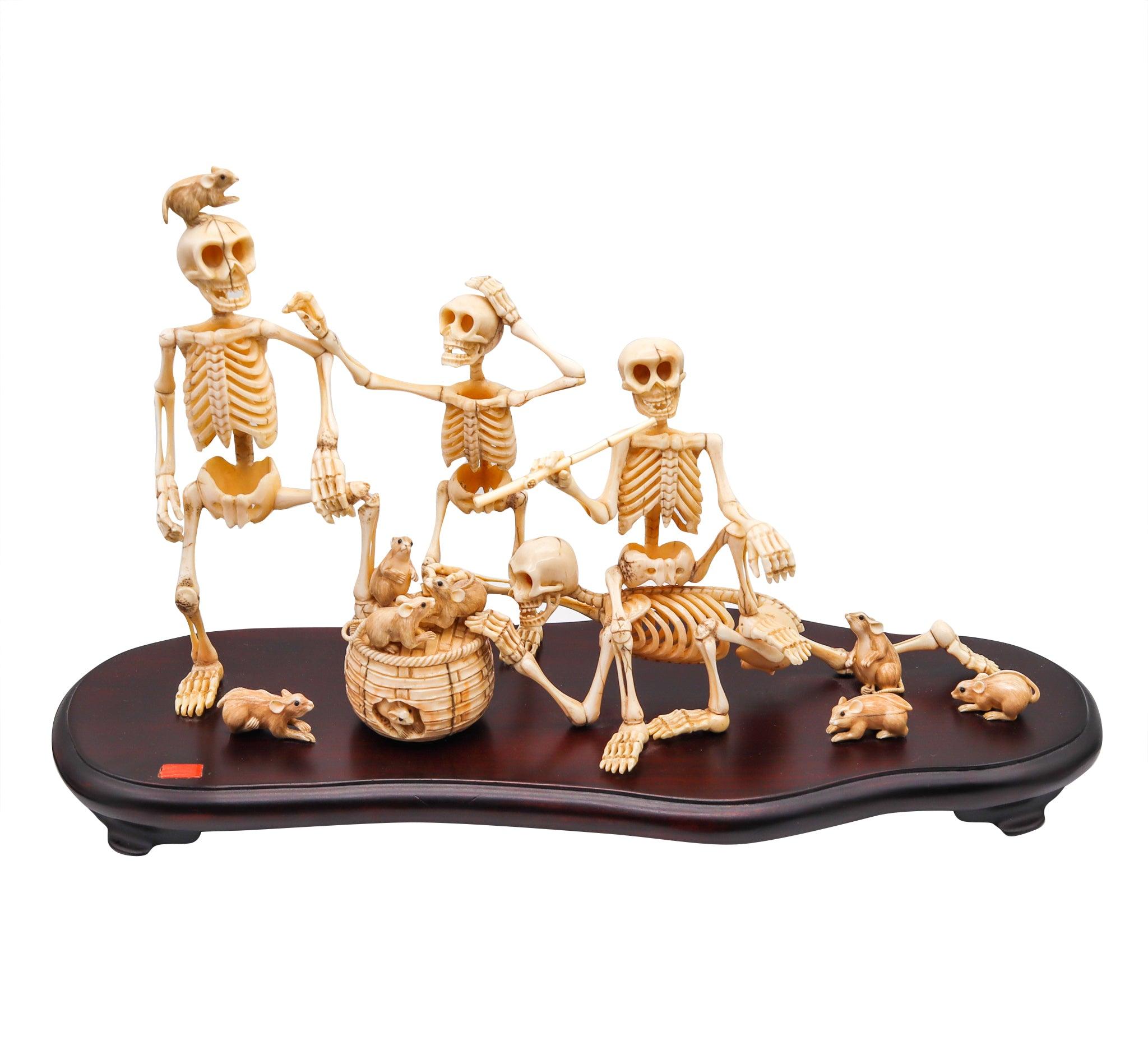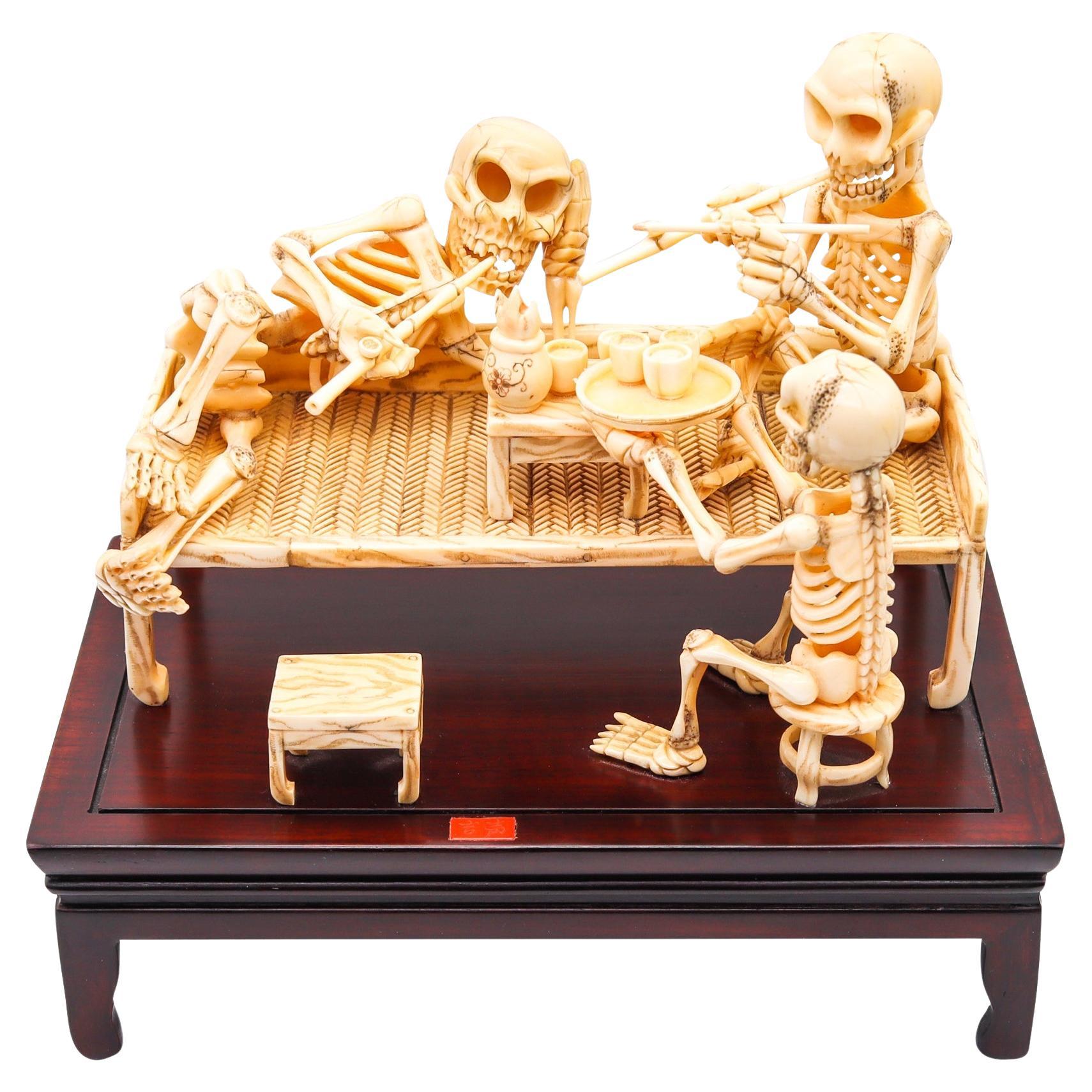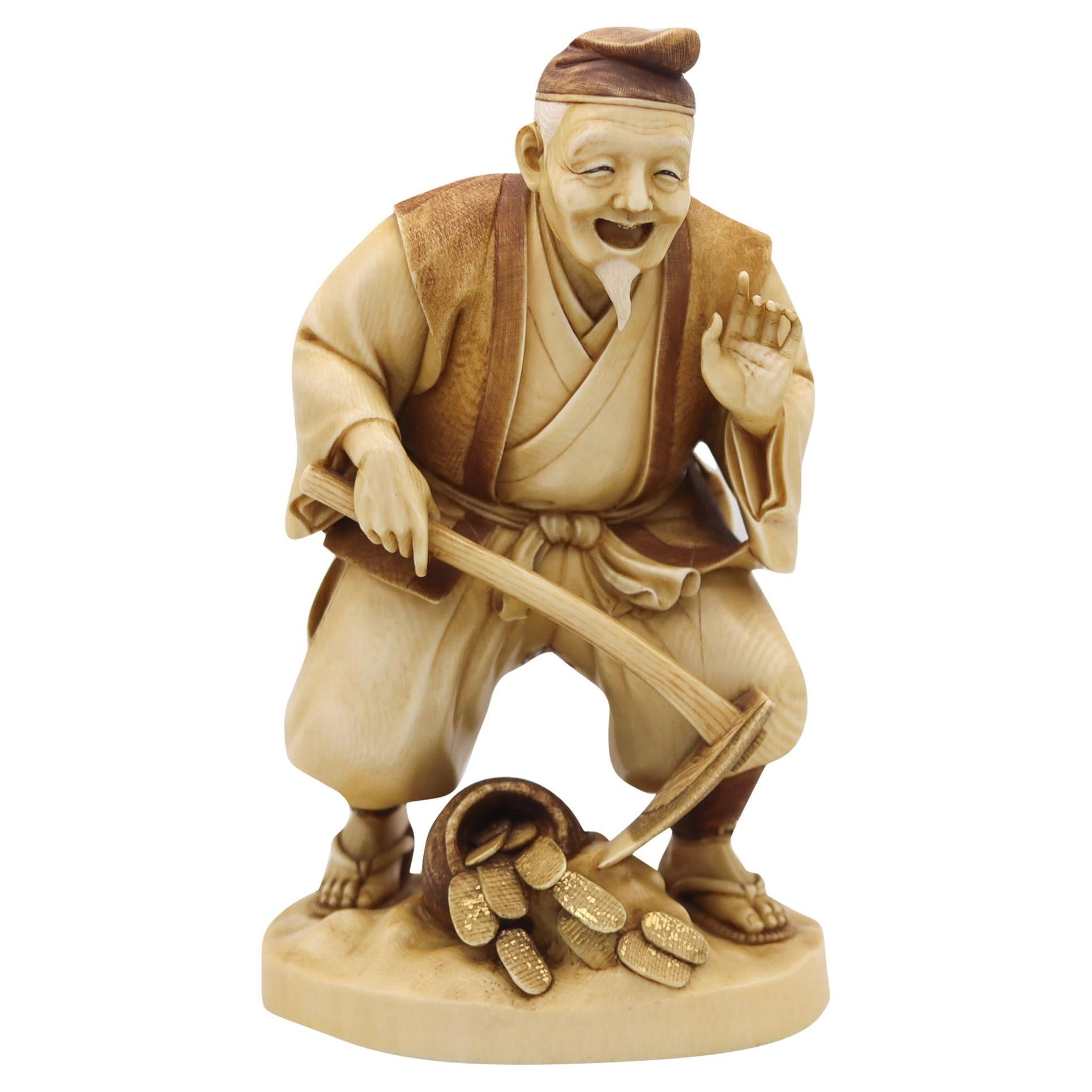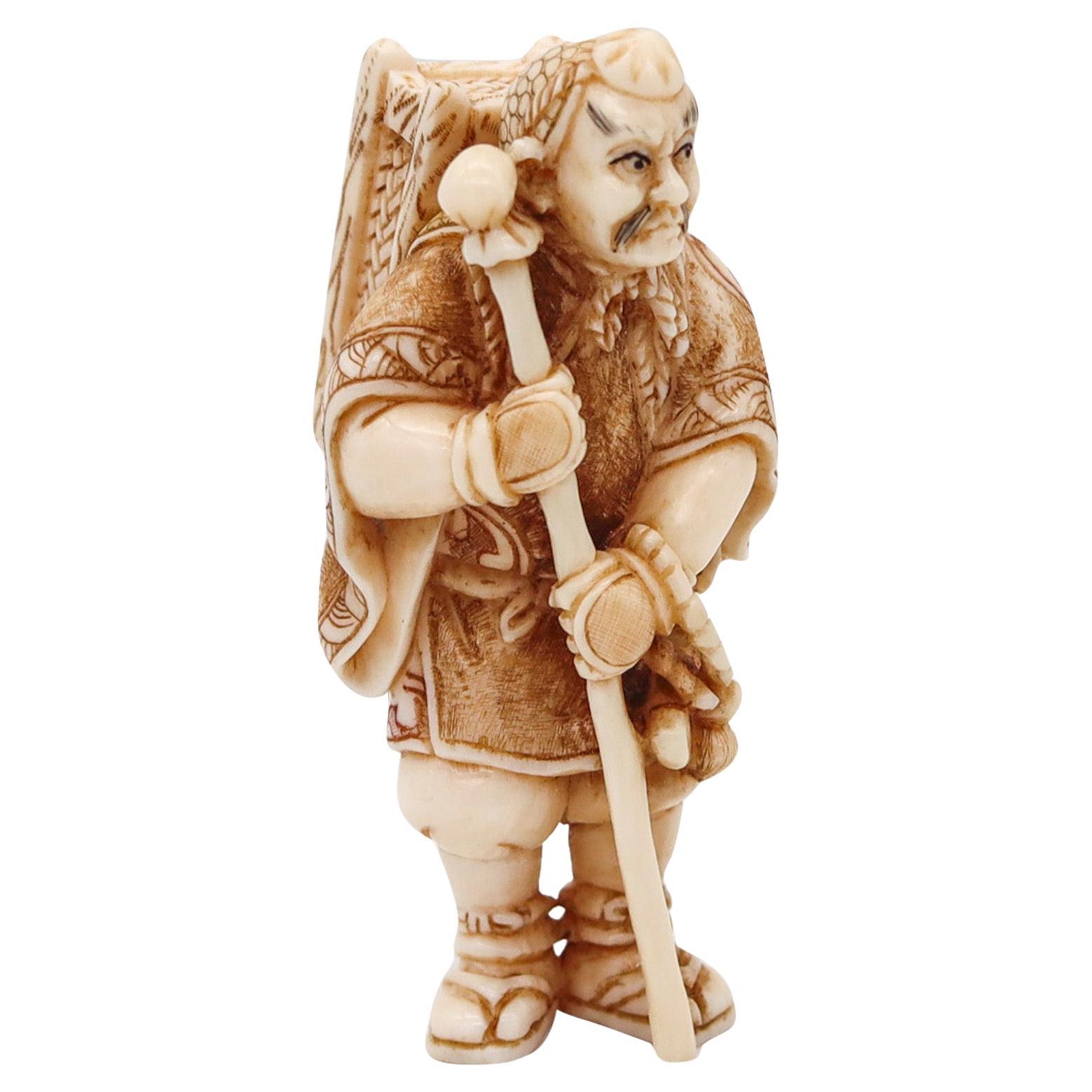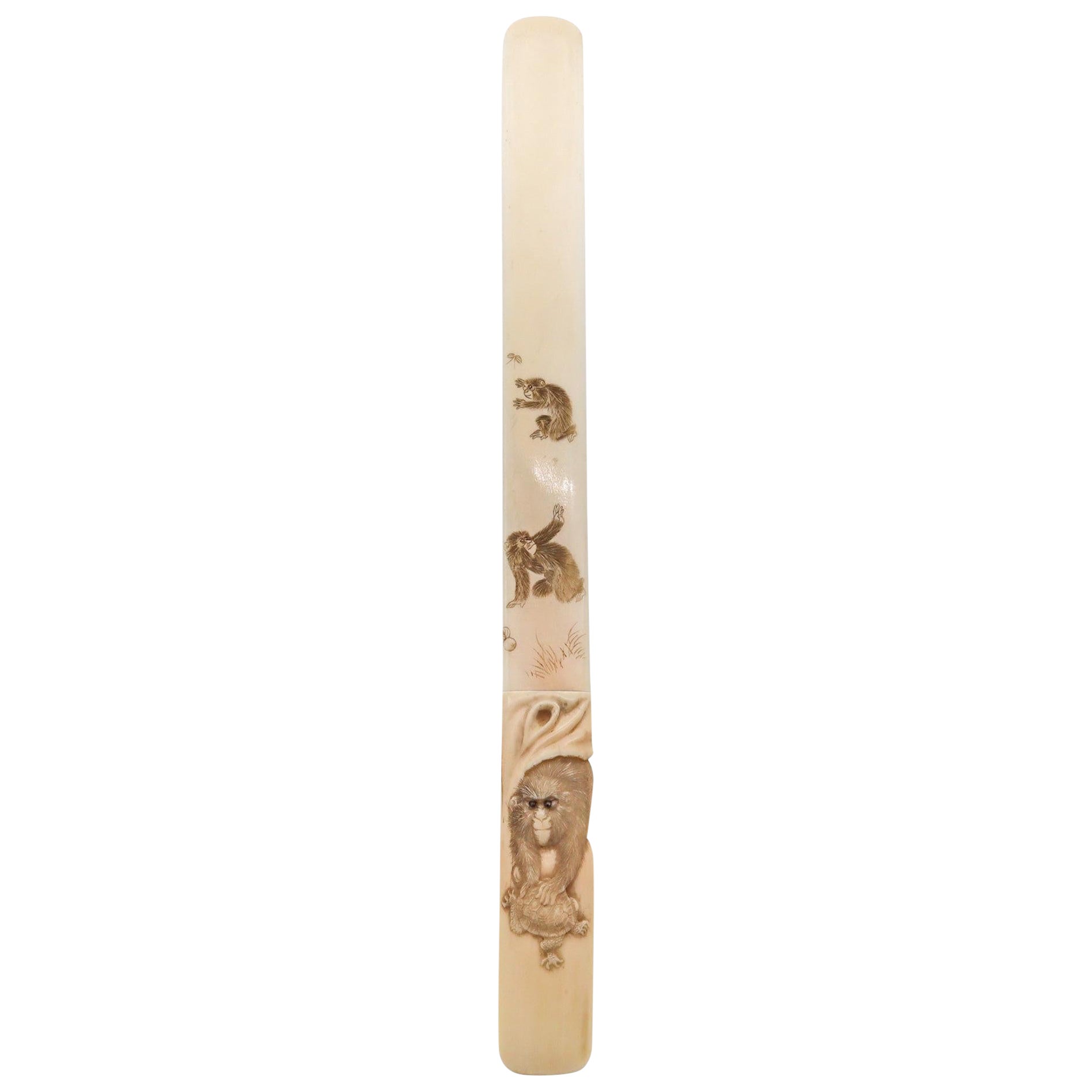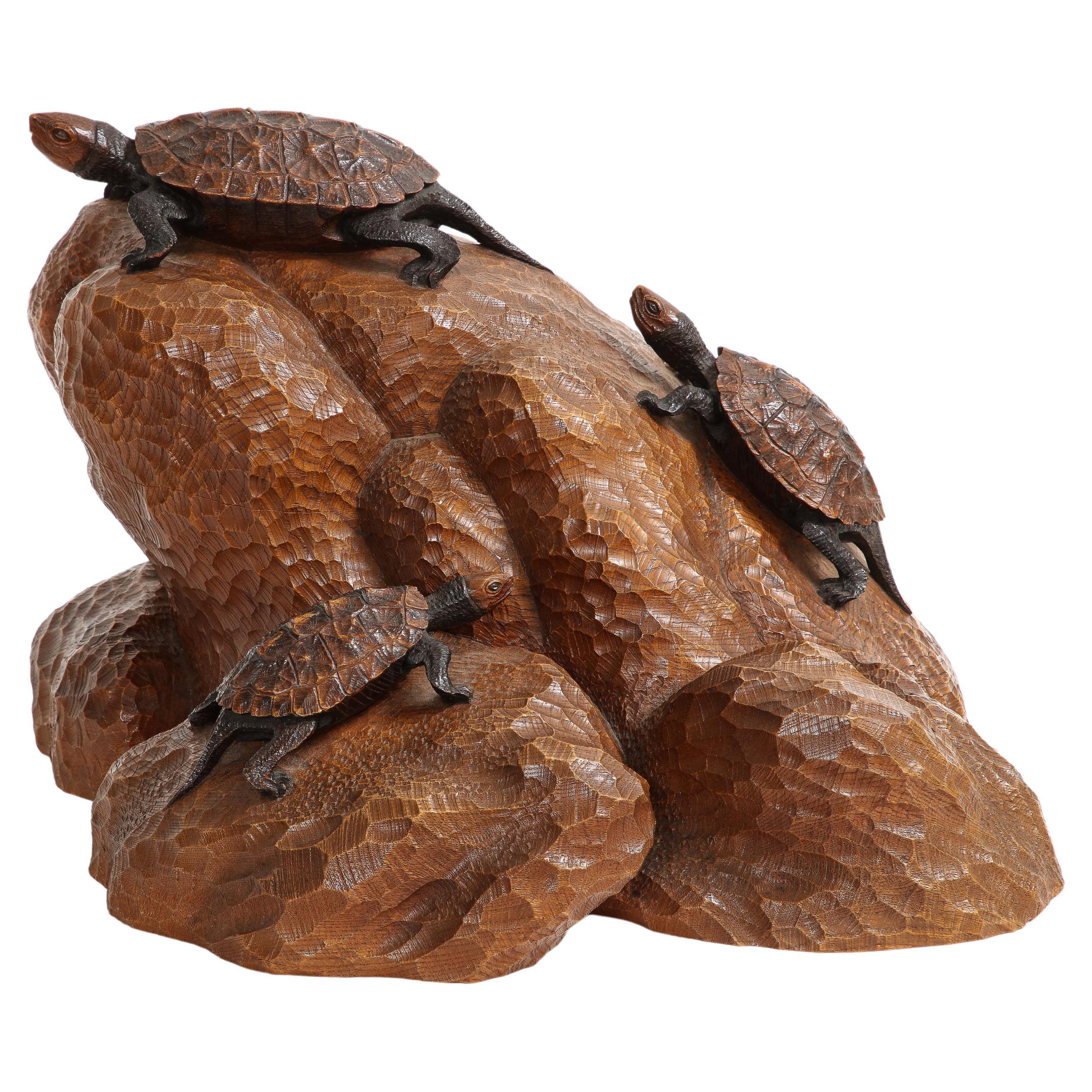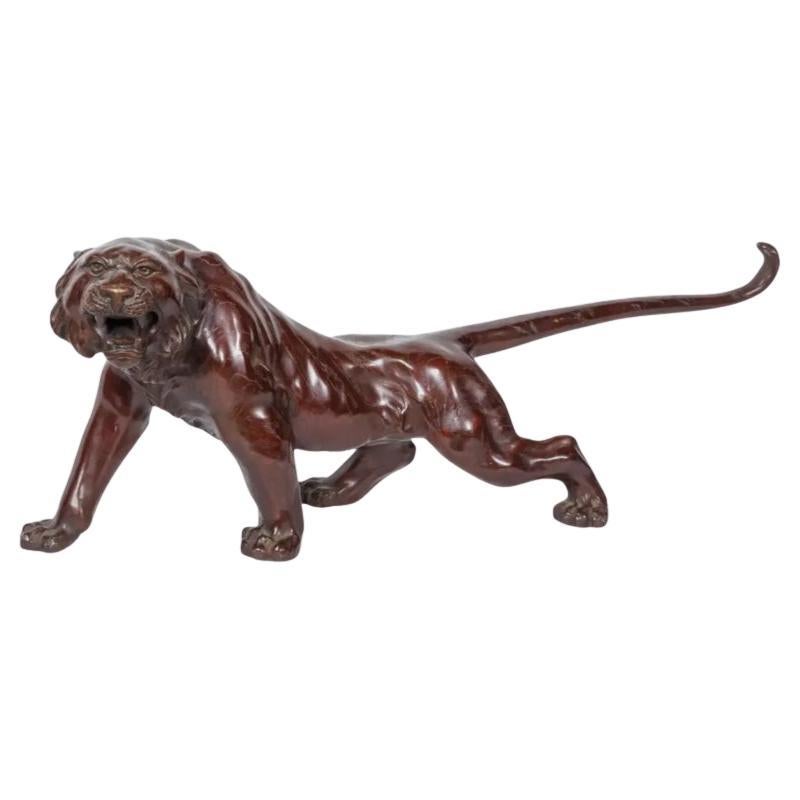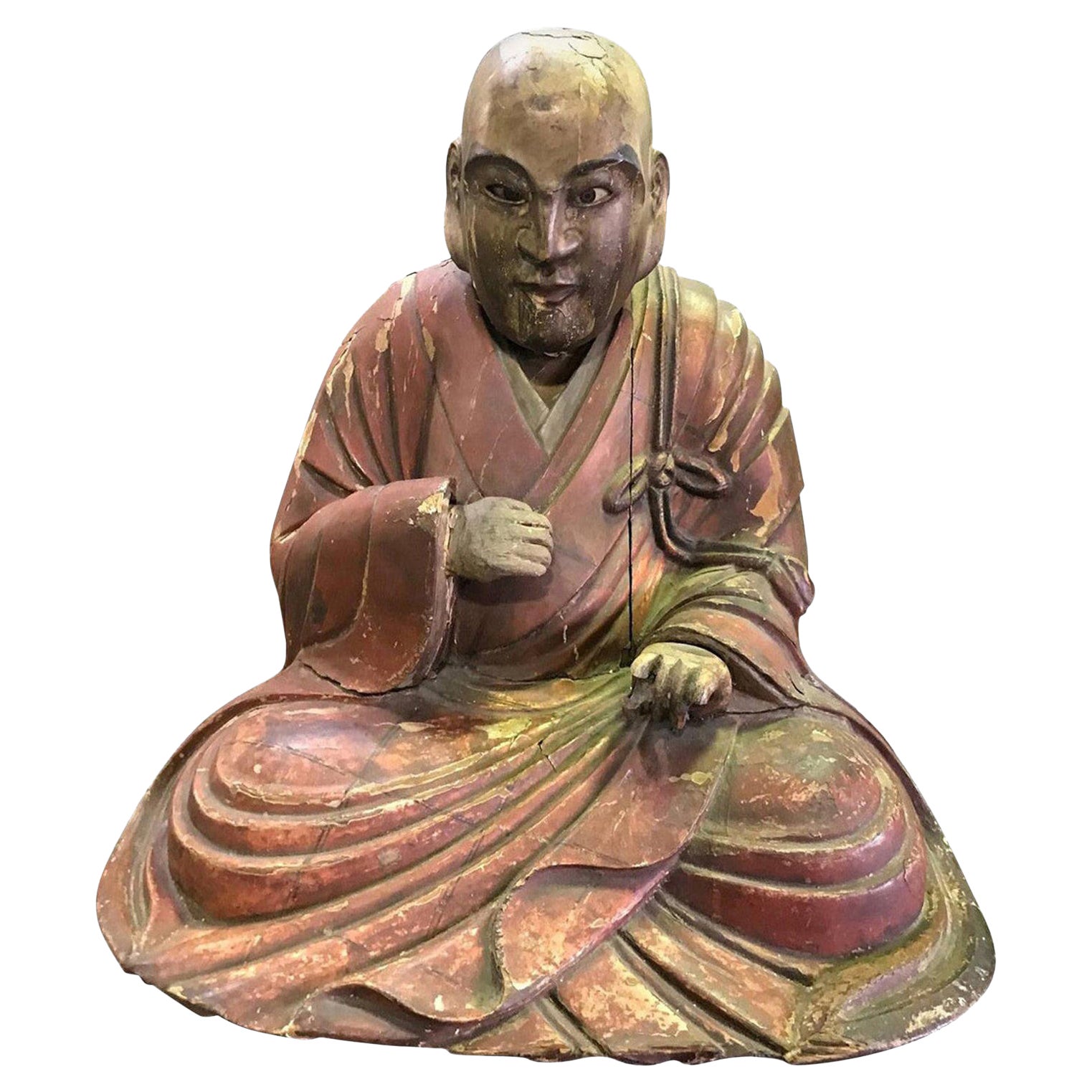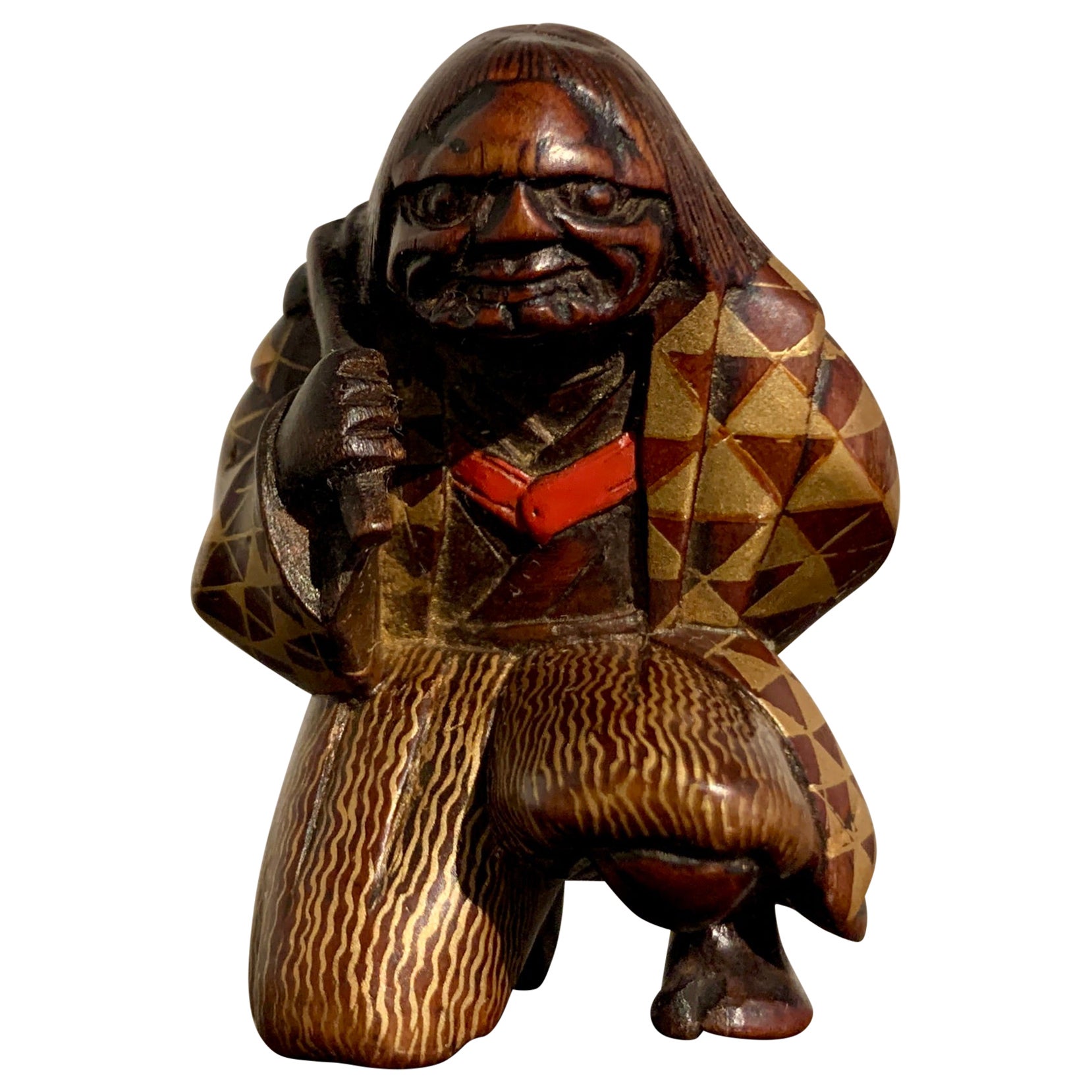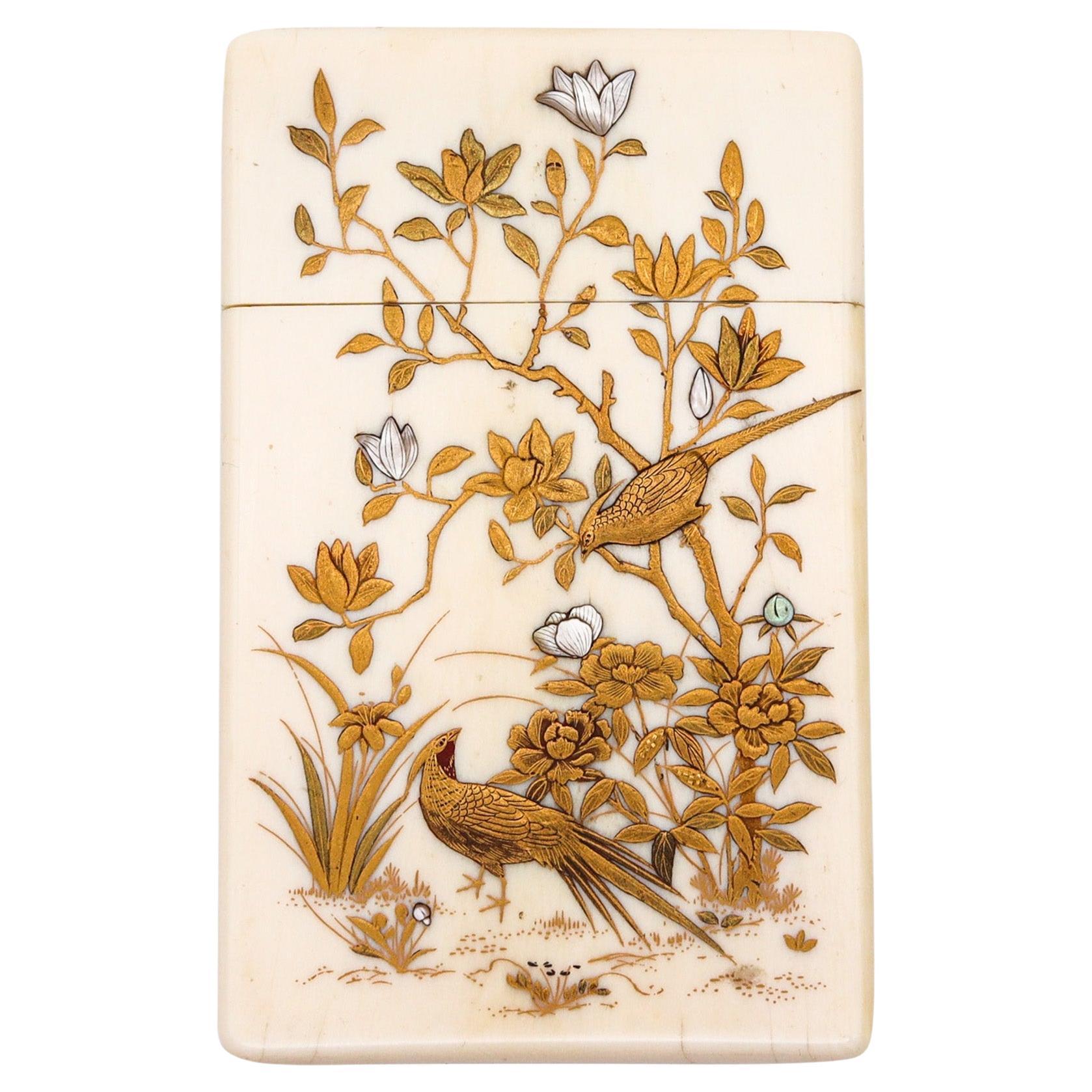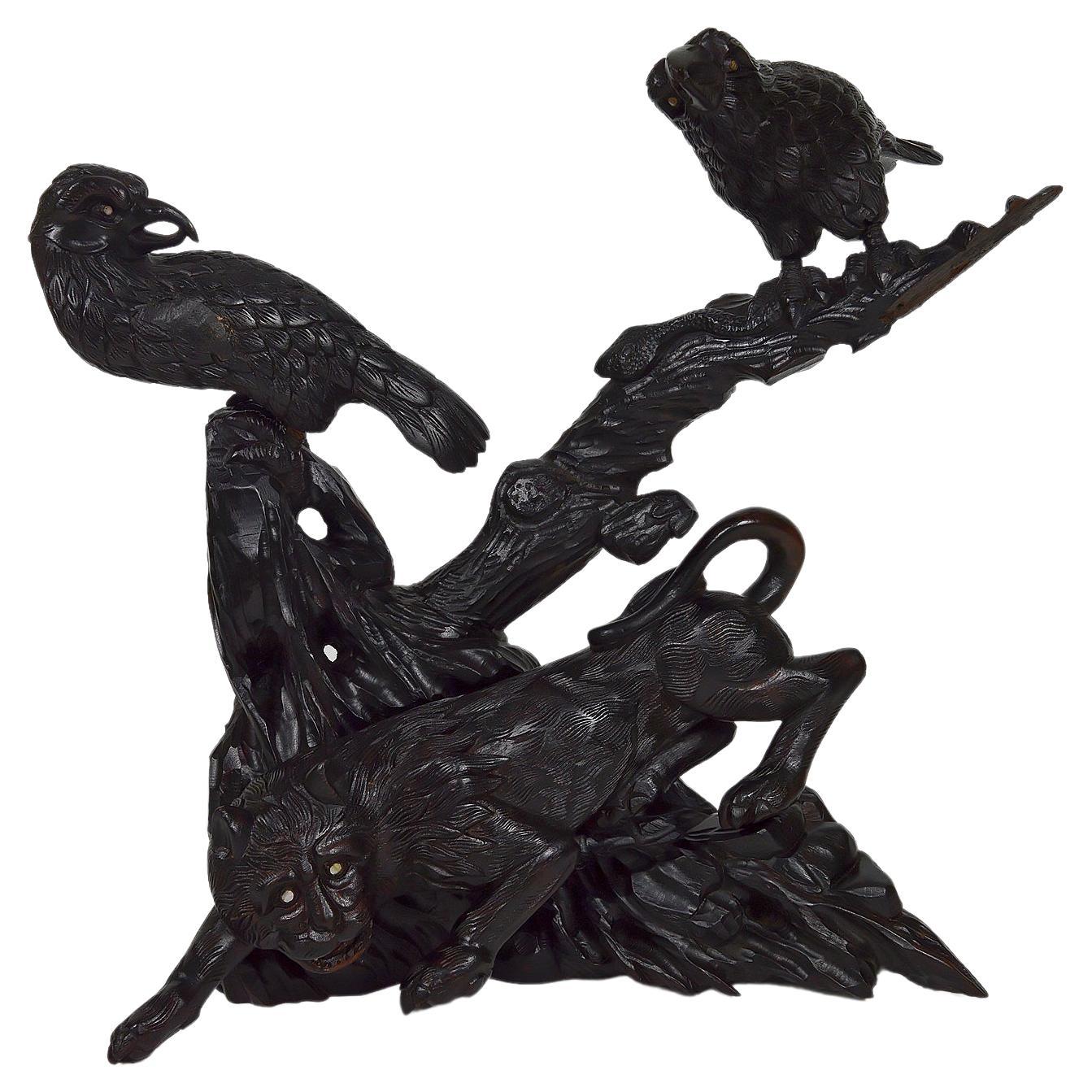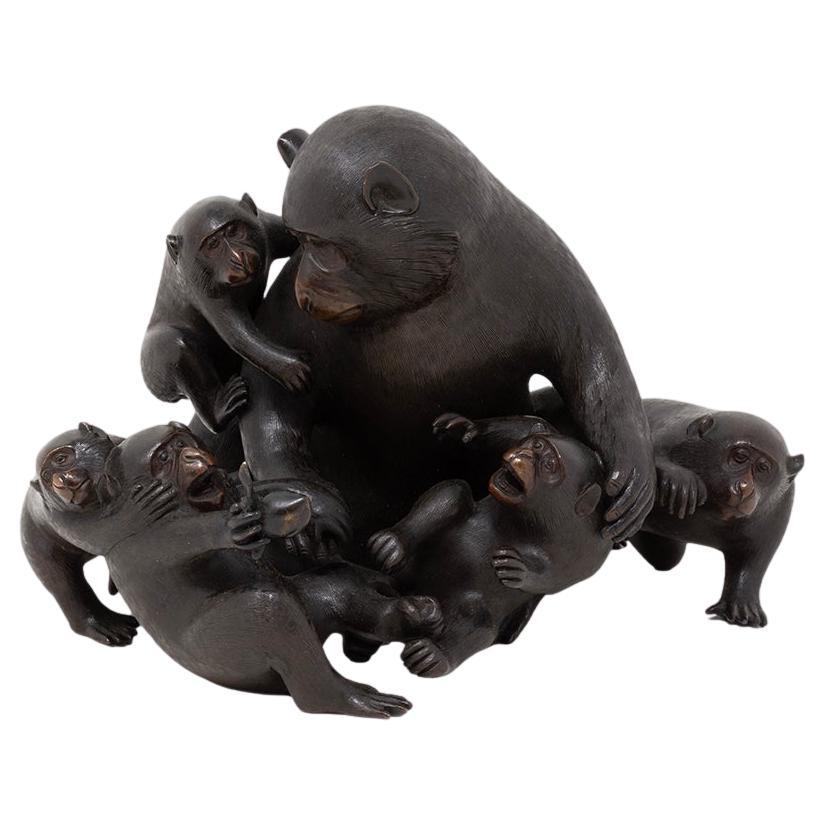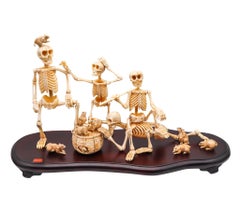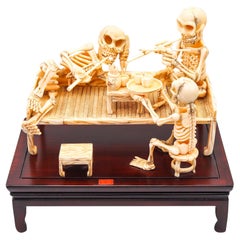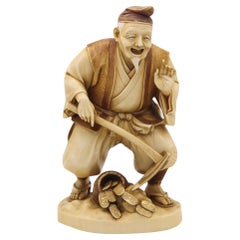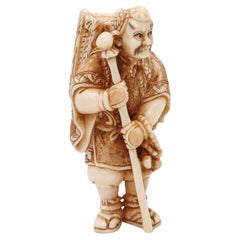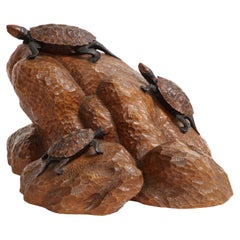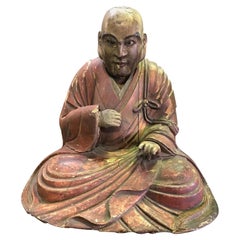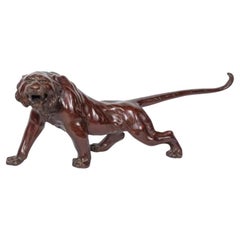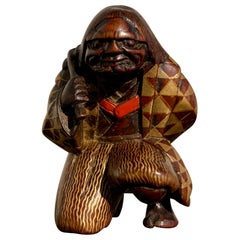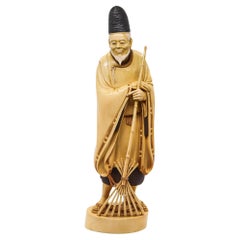
Japan 1890 Meiji Carved Sculpture of a Dressed Monk With a Rake
View Similar Items
Want more images or videos?
Request additional images or videos from the seller
1 of 11
Japan 1890 Meiji Carved Sculpture of a Dressed Monk With a Rake
About the Item
- Dimensions:Height: 13.5 in (34.29 cm)Width: 4.09 in (10.39 cm)Depth: 3.62 in (9.2 cm)
- Style:Meiji (Of the Period)
- Materials and Techniques:
- Place of Origin:
- Period:
- Date of Manufacture:1890
- Condition:Wear consistent with age and use. The overall condition of this sculpture is excellent. Beside the little normal wear, all parts are secured in the settings. This piece has been carefully inspected to guarantee the condition and the authenticity.
- Seller Location:Miami, FL
- Reference Number:Seller: D051224ANNM/.98451stDibs: LU8303239680632
About the Seller
5.0
Platinum Seller
Premium sellers with a 4.7+ rating and 24-hour response times
1stDibs seller since 2023
194 sales on 1stDibs
Authenticity Guarantee
In the unlikely event there’s an issue with an item’s authenticity, contact us within 1 year for a full refund. DetailsMoney-Back Guarantee
If your item is not as described, is damaged in transit, or does not arrive, contact us within 7 days for a full refund. Details24-Hour Cancellation
You have a 24-hour grace period in which to reconsider your purchase, with no questions asked.Vetted Professional Sellers
Our world-class sellers must adhere to strict standards for service and quality, maintaining the integrity of our listings.Price-Match Guarantee
If you find that a seller listed the same item for a lower price elsewhere, we’ll match it.Trusted Global Delivery
Our best-in-class carrier network provides specialized shipping options worldwide, including custom delivery.More From This Seller
View AllJAPAN 1890 Meiji Period Okimono Sculpture With A Group Of Skeletons Playing
Located in Miami, FL
A signed Okimono from the Japanese Meiji period (1868-1912).
Very rare, unusual and large sculptural assembling of a dysplaying piece of okimono. Created in Japan during the imperia...
Category
Antique 1890s Japanese Meiji Sculptures and Carvings
Materials
Wood, Lacquer
$13,989 Sale Price
30% Off
JAPAN 1890 Meiji Period Okimono Sculpture Of A Group Of Skeletons Smoking
Located in Miami, FL
Sculptural signed Okimono from the Japanese Meiji period (1868-1912).
Very rare, unusual and large sculptural assembling of a dysplaying piece of okimono. Created in Japan during the imperial period of the Meiji (1868-1912). This extraordinary okimono was carefully carved depicting a group of three intricately and realistically rendered carousing skeletons (Gaikotsu) in relax and resting position, drinking and smoking. Two of them, probably males representations are resting on a wicker sofa. The third, is a woman seated in a lower stool...
Category
Antique 1890s Japanese Meiji Sculptures and Carvings
Materials
Wood, Lacquer
$13,989 Sale Price
30% Off
JAPAN 1890 Meiji Carved Figure of Fortune God Daikoku As a Farmer With Coins
Located in Miami, FL
A Japanese carved sculpture of Daikoku.
Magnificent sculpture of the god of the fortune Daikoku WITH OVER 100 YEARS OLD, created in Japan during the Meiji period, circa 1890. The ca...
Category
Antique 1890s Japanese Meiji Sculptures and Carvings
Materials
Gold
$3,489 Sale Price
30% Off
JAPAN 1890 Meiji Sculptural Polychromate Netsuke Of a Yamabushi
Located in Miami, FL
Japanese Meiji period netsuke. of a Yamabushi.
This is an exceedingly beautiful and intricate carved netsuke, created during the imperial Japan in the Meiji period, back in he 1890....
Category
Antique 1890s Japanese Meiji Sculptures and Carvings
Materials
Bone
$978 Sale Price
30% Off
JAPAN 1900 Meiji Carved Letter Opener With Sculpted Monkeys
Located in Miami, FL
Japanese Meiji period letter opener.
An exceptional letter opener, created during the imperial Japan in the Meiji period, back in he 1900. The letter opener has been carefully carve...
Category
Antique Early 1900s Japanese Meiji Sculptures and Carvings
Materials
Gold Leaf
JAPAN 1890 Shibayama Carved Cards Holder In With Genuine Gemstones
Located in Miami, FL
Japanese Shibayama cards case holder.
This is a lovely late 19th century Imperial Japan, Gold lacquer and Shibayama cards case. Created during the the Meiji period (1868-1912), the ...
Category
Antique 1890s Japanese Meiji Sculptures and Carvings
Materials
Multi-gemstone, Gold
$1,048 Sale Price
30% Off
You May Also Like
A Meiji Period Japanese Hand-Carved Wood Turtle or Tortoise Sculpture, signed
Located in New York, NY
A Meiji Period Japanese Hand-Carved Wood Turtle or Tortoise Sculpture. The entire object is carved from one solid large piece of hardwood. Hand-car...
Category
Antique 19th Century Japanese Meiji Sculptures and Carvings
Materials
Wood
Japanese Wood Carved Polychrome Sculpture of a Seated Temple Monk, Edo Period
Located in Studio City, CA
This is truly a wonderful piece with clear age and a nice patina to it. Very unique. We have not seen another quite like it. The monk appears to have glass eyes which gives his expression a very humanistic feel. The head is removable (please see the last image).
From a collection of Japanese arts and artifacts. Most likely dates back to the Edo period.
Would make for a nice addition to any Japanese or Asian artifacts...
Category
Antique 18th Century Japanese Edo Sculptures and Carvings
Materials
Wood, Lacquer
A Massive Japanese Patinated Bronze Sculpture of a Tiger, Meiji Period
Located in New York, NY
A Massive Japanese Patinated Bronze Sculpture of a Tiger, Meiji Period. Signed.
Measuring an impressive 44 inches in length, this extraordinary sculpture is a striking example of t...
Category
Antique 19th Century Japanese Meiji Sculptures and Carvings
Materials
Bronze
Carved Boxwood and Lacquer Netsuke of a Noh Dancer, Meiji Period, Japan
Located in Austin, TX
A fine lacquer decorated carved boxwood netsuke of a Noh dancer in a Hannya role, unsigned, Meiji period, late 19th century, Japan.
The boxwood netsuke finely carved as a kneeling Noh dancer dressed in striking geometric patterned robes. The actor holds an opened war fan behind their back in one hand, a Shinto wand slung over the shoulder in the other.
The war fan, tessen, decorated in red lacquer with a golden rising sun at the center. Tessen were sturdy fans used by samurai as protective devices, and sometimes as weapons.
The wand, called an onusa, is a traditional Shinto ritual implement comprised of folded paper streamers, shide, attached to a wooden wand, often used in purification rituals. Here, the shide are crafted from silver maki-e, with the handle of the natural boxwood.
The actor wears a fierce and unearthly hannya mask...
Category
Antique 1890s Japanese Meiji Sculptures and Carvings
Materials
Boxwood, Lacquer
Asian Sculpture / Okimono with Lion and Crows, Japan, Meiji Era, circa 1880
Located in VÉZELAY, FR
Rare and important Japanese sculpture / statue / okimono in blackened and carved wood, depicting 1 lion, 2 birds (crows or other birds of prey) and 1 snake held in the claws of one o...
Category
Antique 1880s Japanese Meiji Sculptures and Carvings
Materials
Wood
$2,467 Sale Price
25% Off
Japanese Meiji Period Bronze Monkey Group Sculpture Okimono Shosai
Located in Newark, England
Featuring Seven Japanese Macaques
Form our Japanese collection, we are delighted to offer this Japanese Bronze Monkey Group by Shosai. The Japanese Bronze Group displaying a male father monkey and his infants playing around and being mischievous with Persimmon fruit. The monkeys modelled as Japanese macaque monkeys (snow monkey). The bronze okimono is beautifully patinated with a highly lifelike and naturalistic casting signed to the underside Shosai 正齊鋳. The Bronze group dates to the Meiji Period (1868-1912) circa 1885.
Japanese macaque (snow monkey) is a terrestrial Old World monkey species that is native to Japan. They are known as snow monkeys because some live in areas where snow covers the ground for long periods each year hence their nickname. No other non-human primate lives further north or in a colder climate than the snow monkey. Individuals have brownish grey fur, pinkish-red faces, and short tails. Two subspecies are known and their conservation Status is of least concern. In Japan, the species is known as Nihonzaru ニホンザル, 日本 (Japan/Nihon) and saru 猿 (monkey) to distinguish it from other primates, but the Japanese macaque is the only species of monkey in Japan.
The Japanese macaque features heavily in the religion, folklore, and art of Japan, as well as in proverbs and idiomatic expressions in the Japanese language. They are often seen in paintings, block prints and represented in all manner of carvings from Okimono to netsuke. Many of these art forms reside in the world’s most famous museums and collections, some of the most prominent pieces by artists such as Mori Sosen and Kawanabe Kyosai. In Shinto belief (Japan’s indigenous religion/nature religion) legendary mythical beasts known as raiju sometimes appeared as monkeys and kept Raijin (the god of lightning/storms) company. In another well known tale the three wise monkeys who warn people to “see no evil, hear no evil and speak no evil” can be seen depicted in relief over the door of the famous Tosho-gu shrine in Nikko.
Meiji Period was an era of Japanese history that spanned from 1868 to 1912. It was the first half of the Empire of Japan, when the Japanese people began to build a paradigm of a modern, industrialised nation state and emergent great power, influenced by Western countries and aesthetics. As a result of radically different ideas, the changes to Japan were profound and it affected the social structure, politics, economy, military, and foreign relations across the board. The period corresponded to the reign of Emperor Meiji and was preceded by the Keio era and was succeeded by the Taisho era.
Cultural Art during the Meiji Period was of particular interest to the government and they overhauled the art export market which in turn promoted Japanese arts via various world’s fairs, beginning in Vienna at the world fair in 1873. The government heavily funded the fairs and took an active role organising how Japan’s culture was presented to the world including creating a semi-public company named Kiritsu Kosho Kaisha (First Industrial Manufacturing Company). The Kiritsu Kosho Kaisha was used to promote and commercialise exports of Japanese art and established the Hakurankai Jimukyoku (Exhibition Bureau) to maintain quality standards. For the 1876 Centennial International Exhibition in Philadelphia, the Japanese government created a Centennial Office and sent a special envoy to secure space for the 30,000 items that would be displayed. The Imperial Household also took an active interest in arts and crafts, commissioning works by select artists to be given as gifts for foreign dignitaries further emphasising the high quality and importance of Japanese art. Just before the end of the 19th century in 1890, the Teishitsu Gigeiin (Artist to the Imperial Household) system was created to recognise distinguished artists. These artists were selected for their exceptionally high quality wares and talent in their own industry. Over a period of 54 years Seventy artists were appointed, amongst these were ceramicist Makuzu Kozan and cloisonné enamel artist...
Category
Antique Late 19th Century Japanese Meiji Sculptures and Carvings
Materials
Bronze
